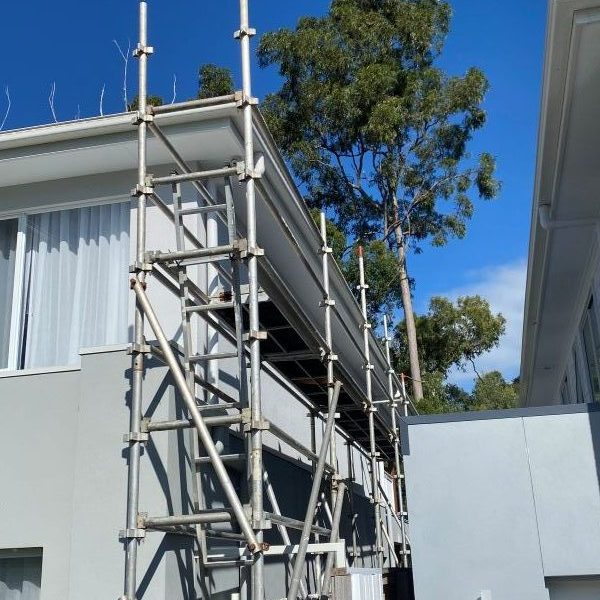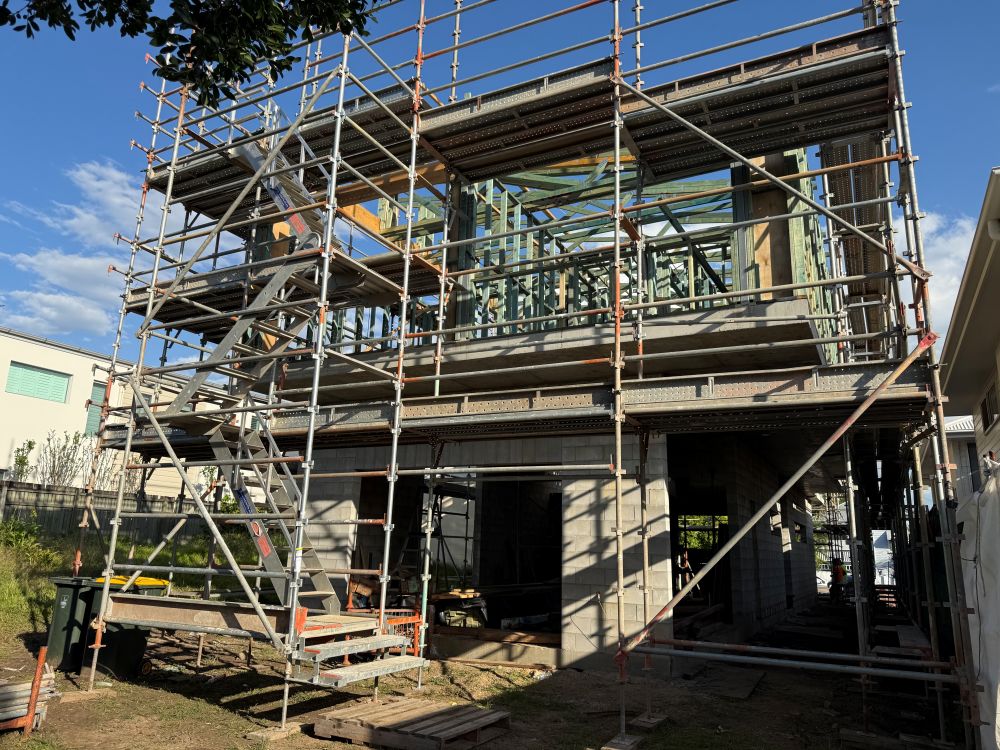Enhancing Scaffold Load Capacity: Key Insights for Ensuring Safety and Compliance in Construction Projects
Scaffold load capacity is a critical aspect that determines the maximum weight a scaffold can securely bear during construction operations. This vital concept encompasses three primary categories of loads that require meticulous assessment:
- The weight of the scaffold itself, commonly referred to as the dead load, which is the intrinsic weight of the scaffold structure.
- The weight of workers, tools, and materials that are placed upon the scaffold, known as the live load, representing the dynamic loads during use.
- External forces such as wind, rain, or vibrations acting on the scaffold, which are classified as environmental load, and can significantly affect stability.
Grasping these loads is paramount, as they directly impact the overall stress exerted on a scaffold during its operational phase. Adhering to these calculations is not merely a recommendation; it is a legal obligation under Australian law, ensuring the safety and well-being of all personnel involved in construction activities.

Comprehensive Step-by-Step Guide to Effectively Utilising Our Scaffold Load and Height Calculator
While a universal formula does not exist for every scaffold configuration, our scaffold calculator serves as an intuitive tool designed to provide precise estimates by simplifying essential variables. This tool is specifically tailored for residential builders, homeowners, and scaffold hire professionals who adhere to regulations established by Australian OHS standards.
Step 1: Identify the Type of Work
Begin by determining the nature of the work involved, which may encompass tasks such as roof restoration, exterior painting, solar panel installation, cladding, or rendering, each requiring unique scaffold configurations.
Step 2: Specify the Number of Workers
For instance, you might input the number of workers, such as two individuals who will be operating simultaneously on the scaffold platform, ensuring adequate load calculations.
Step 3: Estimate the Weight of Materials
This step involves estimating the total weight of materials, which could include around 120 kg of rendering materials or tools that will be necessary during the project execution.
Step 4: Enter the Height of the Platform
For example, you may need to set the height at 4.5 metres above ground level, which is crucial for determining the appropriate scaffold type and safety measures required.
Upon entering this information, the calculator will produce a recommended scaffold configuration that includes:
- The appropriate duty class (e.g., Light, Medium, or Heavy), tailored to your project's needs.
- An estimation of the Safe Working Load (SWL) per bay, providing clarity on load limits.
- The recommended scaffold type (e.g., aluminium tower or steel frame), based on the specifications of your project.
- Essential safety features required, including guardrails, soleplates, and stabilisers to enhance safety.
- Any compliance triggers related to height, such as tie-offs that are necessary above 4 metres to ensure structural integrity.
Understanding the Absence of a Universal Load Formula for Scaffolding Applications
Despite the scaffold calculator being a practical tool for generating estimates, scaffolders and engineers do not solely depend on a single formula due to several significant factors:
- Scaffold systems can vary significantly based on materials and design, including options like aluminium, steel, modular, and tube-and-coupler designs.
- The intended use dramatically influences the load capacity, with different requirements for tasks such as painting compared to masonry work.
- Variations in platform strength and component ratings from different manufacturers can lead to discrepancies in load assessments.
Standardised Method for Calculating Safe Working Load (SWL) in the Industry
Industry professionals frequently refer to the following formula as a foundational reference for estimating:
Safe Working Load (SWL) per bay = (Platform Load Rating × Safety Factor) – Scaffold Component Weight
Detailed Example of Calculation:
- A platform rated for a maximum load of 600 kg, providing a standard for load assessments.
- Applying a 4:1 safety margin: utilising only 25% of the rating results in 150 kg as a conservative estimate.
- Subtracting the weight of the scaffold structure, which may be around 100 kg.
- The resulting usable working load is 50 kg, which serves as a conservative figure and may not reflect the actual planning considerations.
Due to the complexities presented by real-world conditions, professional scaffolders typically adhere to manufacturer guidelines, engineering tables, and local codes rather than relying solely on this simplified formula.

Essential Best Practices Adopted by Professionals in Scaffold Evaluations
Professional scaffold evaluations typically encompass the following critical components to ensure safety and compliance:
- Reviewing manufacturer load data and verified span ratings for accuracy, ensuring reliable information is used.
- Calculating the total live, dead, and environmental loads to verify safety and integrity.
- Ensuring adherence to AS/NZS duty class specifications to meet the highest industry standards.
- Obtaining engineering sign-off for any custom or elevated scaffold setups, ensuring they meet safety requirements.
- Conducting comprehensive visual and structural inspections prior to scaffold use, identifying any potential hazards or issues that could compromise safety.
Tailoring Scaffold Practices to Environmental Conditions and Site-Specific Factors
Addressing Wind Exposure in Coastal Queensland
In regions classified as wind zones N3 and N4, the lateral forces exerted on scaffolds are markedly increased. Consequently, scaffolds must be secured at shorter intervals, with additional bracing or shade cloth potentially required, especially during high-wind seasons, to ensure stability and safety.
Considerations for Soil and Ground Types
In situations involving unstable or sloped soil conditions, it is vital to incorporate soleplates and adjustable base jacks to enhance scaffold stability and safety. Furthermore, sites with differing elevations may necessitate the use of levelled bay systems to ensure a secure working environment.
Regulations for Work Above Four Metres
In Queensland, any platform exceeding four metres in height requires thorough inspection and certification. A scaffold handover certificate is mandated under the Work Health and Safety Regulation 2011, ensuring compliance with established safety standards.
Key Safety Regulations to Follow for Scaffold Operations
- Work Health and Safety Regulation 2011 (QLD), outlining essential safety measures.
- Managing the Risk of Falls at Workplaces (Code of Practice, 2021), providing guidance on preventing falls.
- AS/NZS 1576 and AS/NZS 4576 Standards that govern scaffold safety and performance.
- High Risk Work Licence (HRWL) is required for any scaffold setup exceeding four metres, ensuring that only qualified personnel perform installations.
Site supervisors carry the responsibility of conducting regular inspections, especially after adverse weather events or significant changes to scaffold height or load, thereby ensuring ongoing compliance with safety regulations and practices.
Insightful Case Study: Scaffold Application in Robina
In a recent project located in Gold Coast, a homeowner in Robina required scaffolding to repaint and render a two-storey exterior wall. The working height for this undertaking was established at five metres, with two tradespeople utilising approximately 200 kg of rendering materials and tools throughout the project duration.
By employing our scaffold calculator, the suggested configuration was outlined as follows:
- Scaffold class: Medium Duty, deemed suitable for the task at hand.
- System type: Steel frame with timber planks to ensure durability and safety.
- Additional safety measures: Full edge protection, soleplates for soft earth conditions, and wind mesh to mitigate wind exposure effectively.
The scaffold passed all necessary inspections and adhered to Queensland’s OHS regulations, resulting in zero downtime throughout the entire project, exemplifying the effectiveness of proper scaffold planning and execution.
Critical Considerations Regarding Scaffold Height and Load Capacity Calculations
Calculating scaffold height and load capacity must be approached with precision and care; it should never be treated as mere guesswork. In residential projects, this meticulous process is vital for ensuring safety, managing costs efficiently, and achieving compliance with local regulations.
Given the unique requirements applicable to Australian conditions, particularly in southeast Queensland, it is highly advisable to obtain an accurate scaffolding quote and ensure that all installations are conducted by qualified professionals to guarantee safety and regulatory compliance.
Reach Out to CanDo Scaffolding Hire for Expert Guidance and Exceptional Services
For further information regarding our comprehensive services, please do not hesitate to contact us at 1300 226 336 or send an email to theguys@cando.com.au. We are always available to assist you.
We offer an extensive range of scaffolding solutions, including void protection platforms and roof edge protection, specifically customised to cater to the needs of any residential or light commercial construction project, ensuring the highest standards of safety and compliance.
Understanding Scaffold Load Capacity for Residential Projects
The Article: Scaffold Load Capacity Insights for Residential Projects first appeared on https://writebuff.com
The Article Scaffold Load Capacity for Residential Construction Projects Was Found On https://limitsofstrategy.com

